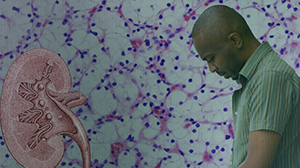NEW YORK (Reuters Health) – Improvements in symptoms of benign prostatic hyperplasia are similar after treatment by transurethral resection of the prostate (TURP) or photoselective vaporization of the prostate (PVP) by laser, and complication rates are the same, a Spanish team has shown.
However, length of stay is significantly shorter with laser treatment. Furthermore, “A distinct advantage of laser PVP over TURP is a higher preservation of ejaculation,” note Dr. Carlos Capitan and colleagues, with Hospital Universitario Fundacion Alcorcon, Universidad Rey Juan Carlos in Madrid, in their report in European Urology online June 1.
They conducted a randomized trial to evaluate the efficacy and safety of GreenLight HPS 120-W laser PVP compared with TURP in 100 patients with lower urinary tract symptoms due to BPH.
Hospital stay was shorter in the PVP group than the TURP group (mean 1.6 days vs 3.6 days, respectively), the results indicate.
At follow-up 2 years after treatment, International Prostate Symptom Scores (IPSS) had dropped significantly and by almost the same degree in both groups: from 23.7 to 8.0 (-15.7) in the PVP group and from 23.5 to 8.6 (-14.9) in the TURP group (p=0.48). However, the team notes, improvements were seen more rapidly in the laser group.
Changes in quality-of-life scores followed a similar pattern and were virtually identical in both groups at 2 years, according to the report. “Retrograde ejaculation was recognized in 30 patients (65%) treated by TURP and in 17 patients (34.7%) treated by PVP (p = 0.001),” the authors report.
Overall, complication rates were statistically equivalent in the two arms, the investigators found. Three PVP patients were readmitted to the hospital and two developed a urethral stricture, while in the TURP group, two patients were readmitted, six developed a urethral stricture, and two developed bladder neck sclerosis.
Summing up, the team concludes that GreenLight HPS 120-W laser PVP is as effective as TURP in symptom reduction, and the complication rate is the same for both procedures. They note that the effect of treatment seems quite durable, pointing out that “our data show that the need for surgical revision due to treatment failure was the same for both techniques, one in each group.”
Reference:
GreenLight HPS 120-W Laser Vaporization versus Transurethral Resection of the Prostate for the Treatment of Lower Urinary Tract Symptoms due to Benign Prostatic Hyperplasia: A Randomized Clinical Trial with 2-year Follow-up
Eur Urol 2011.




